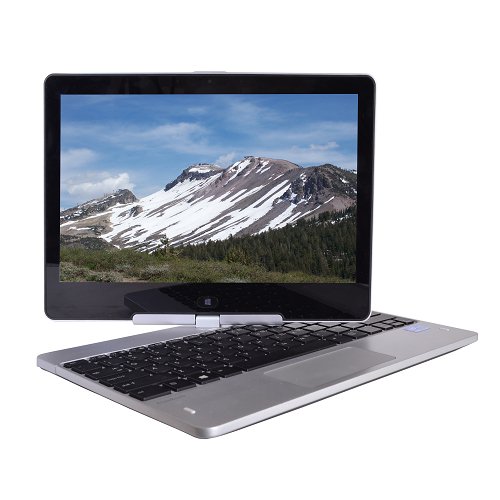
- #Hp revolve 810 external graphics card install
- #Hp revolve 810 external graphics card pro
- #Hp revolve 810 external graphics card software
However, to maximise dual-channel performance, HP recommends the size of the memory in both SODIMMs should be the same - so you might not see any real performance boost after 8GB. This can accept 4GB or 8GB modules, bringing the maximum capacity to 12GB. HP has soldered in 4GB onto the board and left 1 x SODIMM slot user accessible. The battery is straightforward to replace, and but RAM requires a screwdriver to access. The Revolve isn't the most upgradeable device in HP's fleet, but there is scope to improve specifications after purchase. But the reliance on the integrated Intel HD Graphics 4400 and lack of discrete graphics means the Revolve is not for those who want to render heavy duty 3D applications. This can be explained by the inclusion of the high-end Core i7 processor and double the RAM.

#Hp revolve 810 external graphics card pro
Despite running on the 2012 Ivy Bridge architecture, the Revolve outperfomed the Yoga Pro 2, which runs on the latest Haswell part. The Revolve boots in 10 seconds and it's zippy in everyday use. HP also bundles in the following software: HP ePrint, Cyberlink Media Suite, Evernote, Skitch, a 60-day trial of Microsoft Office 2010.
#Hp revolve 810 external graphics card install
There is also the option to install LANDesk Management Suite on the device allowing IT departments to manage whole fleets of devices. We can only hope re-installing it is an easy thing for the IT department to do.
#Hp revolve 810 external graphics card software
When we upgraded the machine to Windows 8.1 we had to uninstall the HP Client Security software before proceeding. Alongside the security features in Windows 8 (and 8.1) there is also HP's BIOS Protection, TPM 1.2 and HP Client Security thrown in for free. Where HP majors on for this device is the security measures. There are a ton of sensors built in, which are normally not found on hybrids - these include a gyroscope, accelerometer, compass, and NFC. Underneath the battery is space for a micro-SIM, so you can have connectivity on the move. Wi-Fi takes the form of 802.11a/b/g/n and there's Bluetooth connectivity. The Revolve is dockable too via its side-docking connector and there's a slot for a microSD card. It includes 2 x USB 3.0 connections, Gigabit Ethernet and DisplayPort 1.2 ports as well as a docking connector. HP has kitted the Revolve out with a number of ports. It's not in the same league as the Retina Displays found in MacBooks or the 3200 x 1800 resolution on the Yoga Pro 2.

The LED-backlit HD UWVA screen is rugeddised with Gorilla Glass, but HP has opted for a bog standard resolution of 1366 x 768. It's complemented by the inclusion of the touch screen, which means you don't have to rely on it 100 per cent of the time. The mousepad is compact but it reponds to movements and finger presses. The keyboard is as durable as the chassis as it is also spill resistant too. Although this reviewers hands are a little on the small size, those with bigger hands may feel their wrists dropping off the side of the machine. Despite the small size, it doesn't feel cramped when in use.

The Chiclet-style keyboard feels responsive.

However, it is heavy when compared to tablets such as the iPad Air (469g). Weighing in at 1.4kg, the Revolve is heavier than the larger 13in MacBook Air (1.3kg) but still portable. At 11.6ins the display is smaller than most laptops, and is closer to a netbook.


 0 kommentar(er)
0 kommentar(er)
